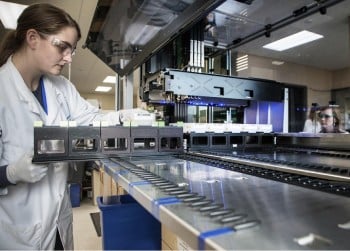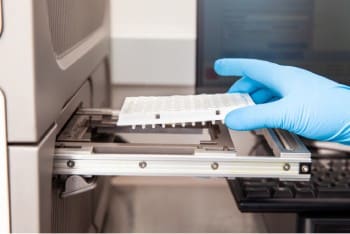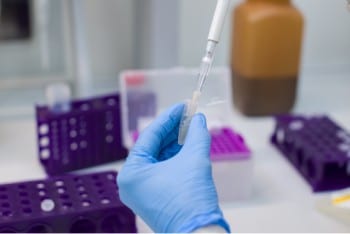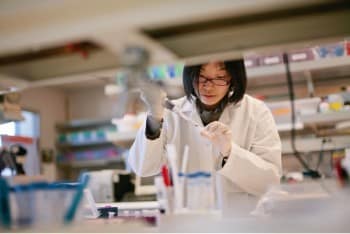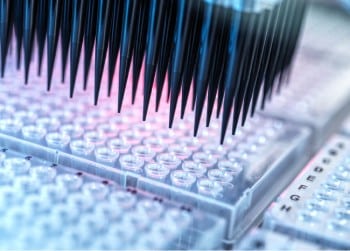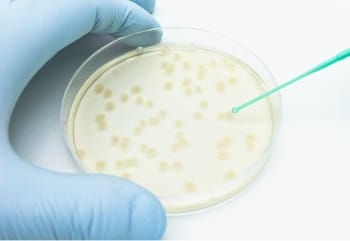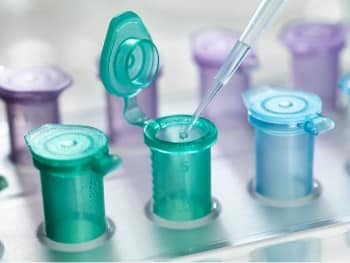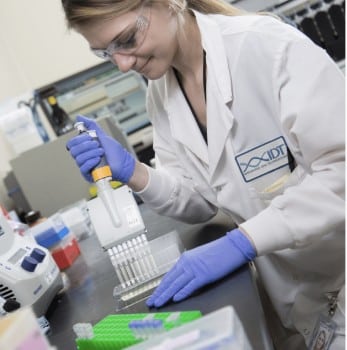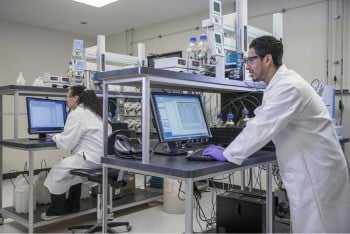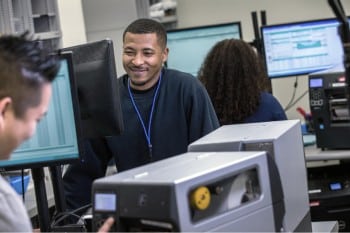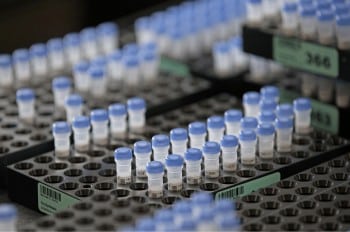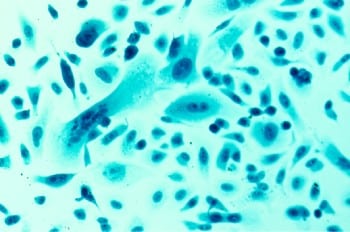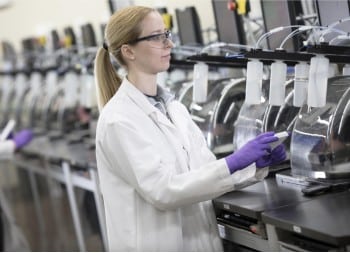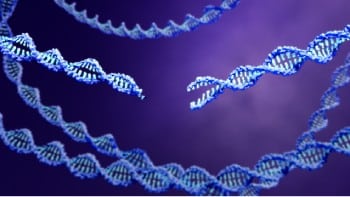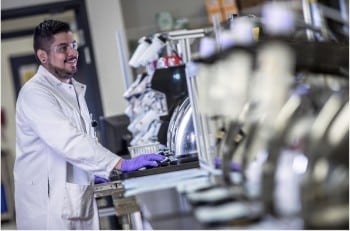The SARS-CoV-2 coronavirus causing the COVID-19 pandemic is an RNA virus, and its RNA genome has been sequenced [1,2]. This RNA virus has attracted a great deal of attention in the CRISPR research community, as the newly discovered CRISPR-Cas13 enzymes target RNA instead of DNA, making SARS-CoV-2 a potential target.
Several members of the Cas13 enzyme family, in particular Cas13a, Cas13b, and Cas13d, have been characterized recently [3–5]. Cas13a has been successfully used for RNA knockdown in mammalian cells [6], and catalytically inactive Cas13b (dCas13b) has been fused to an adenosine deaminase for programmable RNA editing, known as RNA Editing for Programmable A to I Replacement (REPAIR) [7]. Several other uses of the Cas13 enzymes have also been described [8].
The activities of the Cas13 nucleases vary considerably depending on the species of bacteria from which they are derived [9]. Interestingly, Cas13 enzymes can show “collateral” RNase activity in addition to targeted nuclease activity. This means that when one of these enzymes is directed by a specific gRNA to an RNA target, the enzyme first cuts the specific target, and then, the enzyme is further activated to cut many unrelated RNA strands that may be nearby in the solution. Although this collateral RNase activity might appear to be a disadvantage in terms of specific RNA editing, it has made this enzyme family a powerful tool for development of a CRISPR- based method known as SHERLOCK.
Research on CRISPR-Cas13 for virus identification
SHERLOCK is an acronym for “Specific High-sensitivity Enzymatic Reporter unLOCKing.” This technique was first published in 2017 [10] and has been improved since then. A more recent iteration of the SHERLOCK technique is known as SHERLOCKv2 [11]. This uses a combination of multiple Cas13 enzymes as well as other enzymes, including Csm6, which exhibits RNase activity when activated by products of some of the Cas13 nucleases. The combination of these many nucleases allows specific simultaneous identification of multiple nucleic acid sequences. This can be useful for determining whether a specimen is infected with any of several viruses (e.g., for determining whether Zika or dengue virus is present in a single reaction). A protocol for using SHERLOCK to identify any nucleic acid sequence has been published [9]. This protocol was adapted in early 2020 specifically for research use only (RUO) identification of SARS-CoV-2 [12,13]. Shortly after this, the United States Food and Drug Administration (FDA) granted an Emergency Use Authorization of a kit using a modification of this protocol for COVID-19 [14].
Research on CRISPR-Cas13 may help find ways to suppress viral gene expression
In addition to identifying SARS-CoV-2, CRISPR-Cas13 may also have efficacy for developing methods of suppressing expression of certain viral genes. Abbott et al. have published a method known as PAC-MAN (“Prophylactic Antiviral CRISPR in huMAN cells”), which may be valuable for this purpose [15]. Like the CRISPR-based identification methods described above, PAC-MAN may be applied for other viral diseases simply by changing the crRNA sequence used. The PAC-MAN method uses Cas13d, a protein much smaller than the other members of the Cas13 family and known for having strong target cleavage activity [5].
The PAC-MAN principle is to use Cas13d targeted by properly designed crRNAs to cleave not only SARS-CoV-2 viral genomic RNA but also viral mRNA. Abbott et al. considered the entire genome of SARS-CoV-2 from 47 different samples, aligned these sequences with those of SARS-CoV and MERS, and observed high levels of conservation in the RNA-dependent RNA polymerase (RdRP) gene and the Nucleocapsid (N) gene. Cas13d-stably expressing A549 (lung epithelial) cells were then transfected with pools of plasmids to express a pool of crRNAs directed against RdRP and N. Next, the researchers transfected the cells with either plasmid or lentivirus to express SARS-CoV-2 RdRP and N. Different pools of crRNA sequences had different levels of activity in suppressing expression of these SARS-CoV-2 genes. Depending on the pool of crRNA sequences used, up to 90% of the SARS-CoV-2 RNA was repressed. Abbott et al. also showed similar results with H1N1 influenza virus sequences.
In addition to the techniques described above for identification of various viral diseases, especially COVID-19, there are several other similar CRISPR-based methods in the literature. Two methods similar to SHERLOCK but which use L.b. Cas12a, without other nucleases, include “DNA endonuclease-targeted CRISPR transreporter” (DETECTR) [16] and “one-HOur Low-cost Multipurpose highly Efficient System” (HOLMES) [17]; these 2 methods differ from each other primarily in their readout methods.
A method similar to PAC-MAN is CARVER (“Cas13-assisted restriction of viral expression and readout”), which uses Cas13a instead of Cas13d [18]. Since there is such a large number of Cas13 nucleases (from numerous bacterial species), design of crRNAs for all of them is still a major field of investigation. Wessels et al. have recently
published guidelines for designing crRNAs for the Cas13d nuclease [8]. For researchers interested in the above techniques or other Cas13-relevant sequences, IDT can supply all the needed crRNAs, other RNA sequences, and DNA sequences needed (RUO). Additionally, IDT has special expertise in producing FAM- and biotin-labeled RNA, which can be used for SHERLOCK reporter RNA in RUO applications.

